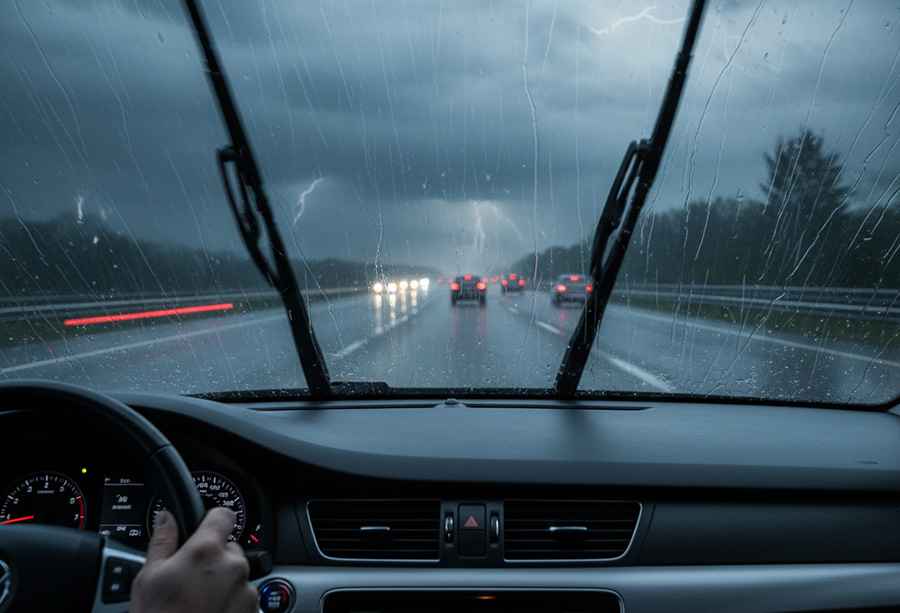12 Tips in Case Heavy Rain Catches You While Driving
Rain, hail, and other severe weather can be a serious problem on the road. If you get caught behind the wheel in one of these situations, it’s important to stay calm and drive with extreme caution.

1. Reduce your speed
Wet roads increase the risk of accidents, so it’s advisable to slow down. Adjust your speed to the condition of the road and to how far you can see ahead.
2. Be extra careful when it first starts to rain
The first drops are particularly dangerous because the water mixes with dirt and oil on the road, making it slippery. Sudden changes in speed or direction can easily cause the car to skid.
3. Increase the safety distance
Wet surfaces mean longer braking distances. Keep a greater distance from the car in front — braking at 90 km/h on a wet road can take about 32 meters more than on a dry one.
4. Don’t brake suddenly
Brake gently and early to avoid locking the wheels. Moisture can reduce the effectiveness of brake pads, so check them occasionally by pressing the pedal lightly.
5. Hydroplaning: don’t brake or accelerate
Hydroplaning happens when your tires lose contact with the road because of a layer of water. If it occurs, don’t brake or accelerate. Gently lift your foot off the accelerator, hold the steering wheel firmly, and steer smoothly once grip is regained. The best way to prevent hydroplaning is to keep your speed moderate.
6. Don’t cross rivers, streams, or flooded areas
Never try to cross moving water on foot or by car. Even a small amount of water can carry a vehicle away. Stay away from rivers, streams, and flood-prone areas, and don’t park nearby. Avoid standing near bridges or viaducts during heavy rain.
7. Drive slowly through large puddles
If you have to go through a deep puddle, use first gear and drive slowly. Once through, test your brakes to make sure they’re still working properly.
8. Be careful with fallen leaves
Wet leaves can be as slippery as ice. They hold water and prevent tires from gripping the road properly, increasing stopping distances.
9. Watch for poor visibility
Rain reduces visibility, so turn on your low-beam headlights so others can see you. Use the ventilation system to prevent the windshield from fogging up, and turn on your front and rear wipers. Use fog lights if necessary and signal all maneuvers early.
10. Follow the tracks of other vehicles
Drive in the tire tracks left by the vehicles ahead — those areas are usually less wet and provide slightly better traction.
11. Use hazard lights if there’s an incident
If you experience a problem or need to stop, turn on your hazard lights to warn other drivers.
12. Stop the car if necessary
In cases of torrential rain or hail, pull over in a safe place and keep your lights on until the weather improves.